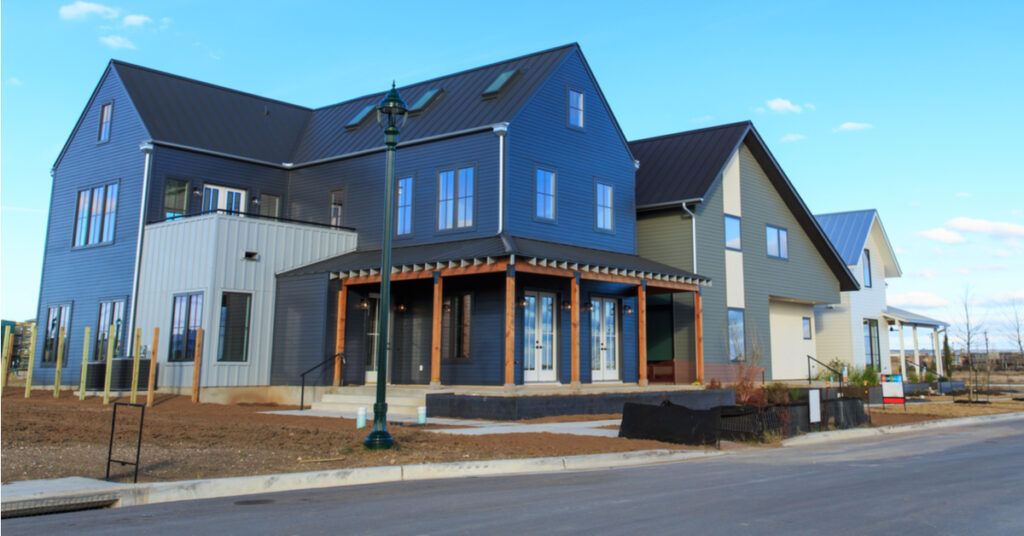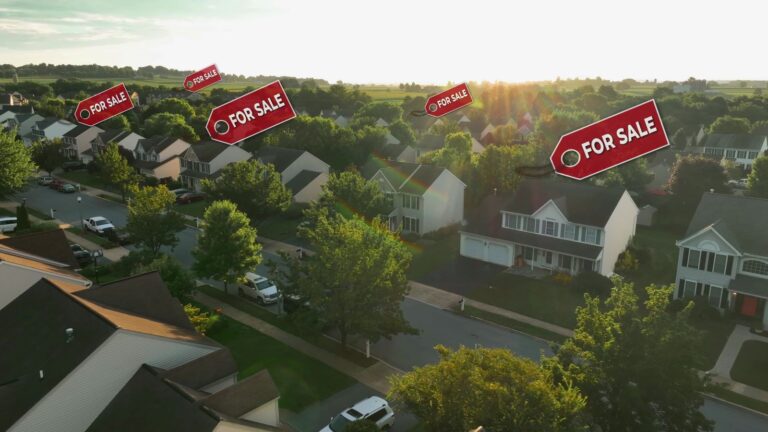Sales of new single-family homes posted a seasonally adjusted annual rate of 679,000 in October, a 5.6% monthly stepback that partially undid some of September’s 8.6% gain.
September’s monthly increase received a downward revision too, underscoring some weakness in new home demand and suggesting that the high mortgage interest rate environment continues to hold back sales. According to Freddie Mac, mortgage rates averaged 7.62% in October — the highest monthly average since 2000.
Still, the data implies that the new home market continues to enjoy remarkable resilience as buyers continue to look to new construction to fill the void created by the dearth of resale listings. New home sales were up 17.7% annually in October. Compare that to the 14.6% year-over-year drop in existing home sales in the same month.
Builders are doing their part to nurture demand, with 62% percent of respondents in the most recent survey by the National Association of Home Builders (NAHB) providing a sales incentive in October. They’re remaining proactive to pry buyers from the sidelines, according to Ksenia Potapov, economist at First American Financial Corp.
“Builders have been able to attract buyers from the existing home market with incentives that have created affordability relative to existing homes,” Potapov said. “According to NAHB, 36% of builders reported cutting home prices in November and 60% of builders provided sales incentives of some kind.”
The pressure is on to keep churning out new product. Total new home supply is at a healthy level, with October’s inventory level of 439,000 units marking the most since January. That equates to 7.8 months of supply at the current sales rate, well above the historic average of 5.9 months. But Potapov noted that to actually provide viable relief to the ongoing home inventory crisis, more of the new home inventory needs to be comprised of ready-to-occupy deliveries.
“Builders are benefiting from the lack of resale inventory, but to relieve the supply pressure, they need to deliver homes that are completed and ready to occupy,” she said. “In November, 17% of the total new home inventory for sale was completed, down from more than 20% pre-pandemic.”
Supply at the most affordable tiers, crucial for first-time homebuyers, remains particularly limited, Potapov noted. Only 15% of new home sales in October were priced below $300,000.
The gap between prices for new and existing homes has seen notable contraction of late, with the median new home price at $409,300 in October. That’s only $13,200 more than the median existing home price in the same month. Consider that in 2019, this gulf stood at $46,900.
“Median new home prices have moved lower as new home size has decreased in 2023,” said Robert Dietz, NAHB chief economist. “Combined with sales incentives and a lack of resale inventory, demand has remained solid in 2023 and should improve in 2024 as interest rates move lower.”







